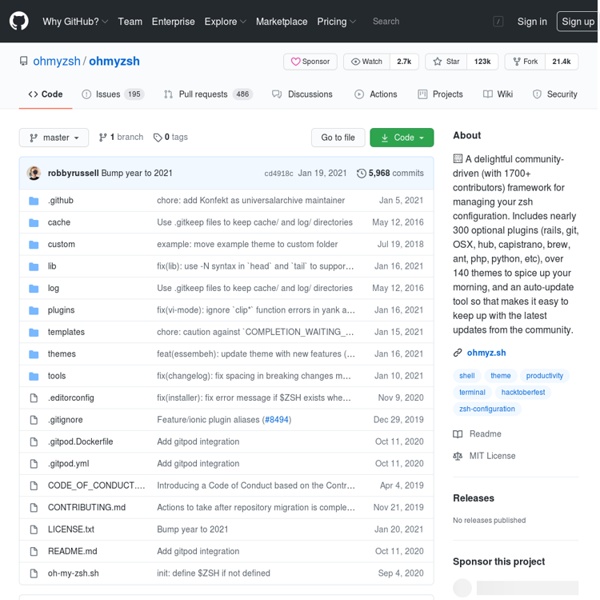



ptitfred/magrit - GitHub pbpaste & pbcopy in Mac OS X (or: Terminal + Clipboard = Fun!) The OS X shell is very powerful, but some wonderfully useful commands are almost entirely unknown to the community at large. Two of these forgotten commands are pbcopy and pbpaste. Let's take a quick look at what they can do. pbcopy This command allows you to copy text from stdin into the clipboard1 buffer. echo 'Hello World!' "Hello World!" pbpaste Pastes from your clipboard to stdout. This will echo the contents of your clipboard. What Can I Do With These? What can't you do! You could grab the output of a grep/awk/sed to paste into IM/IRC.You could use a macro tool (like iKey, QS, et cetera) to create text modifying workflows that grab highlighted text, manipulate it, and replace it inline.You could pull changelogs from svn into the clipboard when tagging for release so you could email them to coworkers. Let me know what amazing things you come up with to enhance your own productivity!
Git et LDAP en entreprise Le gain apporté par les gestionnaires de configuration distribués n’est plus à démontrer . Dans ce domaine, les projets libres montrent la voie, et en utilisent presque tous un, que ce soit Git , Mercurial , etc. Cela fait maintenant quelques temps que je teste Git , y compris au travail en interface avec SVN , notre gestionnaire de configuration d’entreprise. Pour aller plus loin dans cette utilisation, il fallait envisager de remplacer (ou de doubler) le serveur SVN central par un repository Git central (« « ). Voici différentes pistes que nous avons envisagées pour ce faire : Utiliser un hébergement dédié Une première solution est d’externaliser l’hébergement des sources des projets (sur GitHub par exemple). Ces deux outils sont basés sur le même principe : le serveur connaît les clés SSH publiques des utilisateurs autorisés Pour les détails de mise en oeuvre, je vous renvoie à ce tutoriel complet . Droits du système Présentation des dépôts par un serveur web Conclusion
Cheatsheet · robbyrussell/oh-my-zsh Wiki To try it out if you have just cloned it (to your home directory): source ~/.oh-my-zsh/templates/zshrc.zsh-template Commands See ~/.oh-my-zsh/lib/directories.zsh Alias example: alias -s rb=vim #opens ruby files in vim# $ foo.rb # vim => foo.rbalias -g gp='| grep -i' #creates a global alias for grep# $ ps ax gp ruby# (all ruby process will be displayed) Tab-completion Git You also find these commands in Dash as a Cheat-sheet. Editors Symfony2 tmux Systemd systemctl Rails Rails Aliases RAILS_ENV Aliases Upgrade To upgrade .oh-my-zsh, run: upgrade_oh_my_zsh
Git dans la pratique Nous avons déjà parlé de Git sur ce blog, sur la notion de DVCS, sur son utilisation pour réaliser un build incassable, et sur ces formidables outils de merge que sont les DVCS. Mais qu’en est-il des « Git va vous sauver la vie », « Git c’est trop cool, comment je faisais avant ? » ou des « Git c’est trop compliqué, j’comprends rien, pourquoi on n’utilise pas Subversion ? ». Qu’en est-il de l’utilisation de Git dans un projet ou Subversion aurait pu « faire l’affaire » (ie. un dépôt centralisé, une seule équipe de développeurs dans un même bureau) ? Après quelques mois d’utilisation de Git dans un projet avec une dizaine de développeurs, la plupart ne connaissant Git que de nom et ayant tous une bonne connaissance de Subversion, chacune des citations précédentes deviennent plus claires : Oui, Git c’est compliqué Si vous voulez vraiment utiliser Git au-delà du simple commit/push/pull, comprenez d’abord ce qu’est l’index et la différence entre une branche distante et locale. L’index Annexes
visionmedia/git-extras